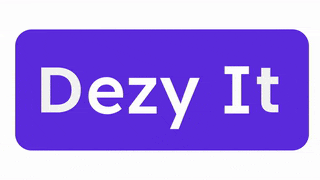How Secure Systems Protect Sensitive Patient Information
- Indranil Roy

- Jun 2
- 3 min read
In today's digital age, protecting sensitive patient information has become a top priority for healthcare providers. With the rise of cyber threats and data breaches, secure systems play a critical role in ensuring that healthcare organizations comply with regulations and maintain the trust of their patients. This blog post explores the ways in which secure systems protect sensitive patient information and provides actionable insights for healthcare professionals.
The Role of Secure Systems
Secure systems are designed to safeguard patient data from unauthorized access and breaches. These systems implement advanced security measures to ensure data integrity, confidentiality, and availability. Examples of secure systems include electronic health records (EHRs), secure messaging platforms, and cloud storage solutions.
According to a report by the Ponemon Institute, the average cost of a data breach in healthcare is approximately $7.13 million. This staggering figure underlines the importance of investing in secure systems to protect patient information.
Secure systems not only defend against cyber threats but also help organizations comply with industry regulations, including HIPAA.

Understanding Data Encryption
Data encryption is one of the core components of secure systems. This process transforms readable data into a scrambled format, making it unreadable to those without the appropriate decryption key. This means that even if cybercriminals gain access to encrypted data, they cannot interpret it without the decryption key.
For healthcare organizations, encryption ensures that patient information remains confidential during data transmission and storage. For instance, if a healthcare provider sends an email containing patient information, employing encryption technology ensures that only the intended recipient can access this data.
Additionally, encryption is a critical component of compliance for organizations utilizing **hipaa-compliant solutions**. As HIPAA mandates strict requirements for data handling, encryption significantly reduces risks associated with data breaches.

Access Controls and Authentication
Another vital aspect of secure systems is the implementation of access controls and authentication mechanisms. These measures ensure that only authorized personnel can access sensitive patient information.
Access controls typically involve setting user permissions based on roles within the organization. For instance, nurses may have access to patient medical records, while administrative staff might only have access to billing information. This hierarchical approach reduces the risk of unauthorized access and ensures that individuals only see the data relevant to their job responsibilities.
Authentication, on the other hand, refers to verifying a user's identity before granting access to systems. This could involve passwords, biometric scans, or two-factor authentication (2FA). According to a study by the National Institute of Standards and Technology (NIST), using 2FA can reduce the risk of breaches by 95 percent, thereby enhancing overall system security.

Regular Audits and Monitoring
To maintain a secure system, healthcare organizations must conduct regular audits and monitoring of their data security measures. This practice identifies vulnerabilities and ensures compliance with regulations.
Audits involve comprehensive assessments of an organization's security strategies, data access logs, and compliance with guidelines, like those set forth by HIPAA. For instance, a healthcare provider might audit their access control systems to ensure that permissions are appropriately set and any anomalies are reported swiftly.
Additionally, continuous monitoring allows organizations to detect suspicious activities in real-time. Utilizing advanced security information and event management (SIEM) tools helps healthcare entities identify potential threats before they escalate into serious incidents.
Employee Training and Awareness
A secure system is not solely reliant on technology; it also requires a well-informed workforce. Employee training and awareness programs are essential in empowering staff to recognize and respond to potential security threats.
Training sessions should educate employees on best practices for handling sensitive information, recognizing phishing attempts, and adhering to data protection policies. According to a report from the Cybersecurity & Infrastructure Security Agency (CISA), over 85 percent of data breaches involve human error. This highlights the crucial role employees play in maintaining the security of patient data.
Furthermore, fostering a culture of security within the organization encourages employees to prioritize data protection in their daily routines. By implementing ongoing training and awareness campaigns, healthcare providers can significantly reduce cybersecurity risks.
Conclusion: The Importance of a Comprehensive Approach
In conclusion, safeguarding sensitive patient information requires a comprehensive approach that combines technology, processes, and people. Secure systems, including encryption, access controls, regular audits, and employee training, work together to protect against potential breaches.
Healthcare organizations must remain vigilant and adapt their security strategies to combat evolving threats. By investing in secure systems, providers not only protect patient information but also build trust within their communities.
Ensuring that systems are **hipaa-compliant solutions** is crucial for compliance and protecting sensitive data. With the right tools and strategies in place, healthcare can thrive in a secure environment, ultimately leading to better patient care and satisfaction.

